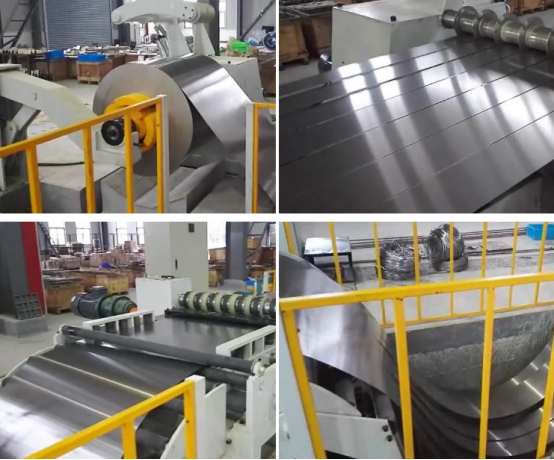
Understanding Light Gauge Steel Rollforming A Modern Construction Solution
In the world of modern construction, the need for efficient, durable, and cost-effective materials has never been more pressing. Among the various innovations that have emerged to meet these demands, light gauge steel rollforming stands out as a versatile and reliable method of producing steel components. This article delves into the intricacies of light gauge steel rollforming, its advantages, applications, and the technology driving its success.
What is Light Gauge Steel Rollforming?
Light gauge steel rollforming is a process that involves shaping steel strips into predetermined profiles through a series of rollers. The steel used is usually cold-formed, which delivers lightweight but robust structural components. The rollforming process is efficient, producing consistent profiles at high speeds, making it ideal for large-scale construction needs.
Advantages of Light Gauge Steel
1. Weight Efficiency One of the main benefits of light gauge steel is its low weight compared to traditional building materials such as concrete or heavy-gauge steel. This attribute not only makes transportation easier but also reduces the load on supporting structures, allowing for more innovative architectural designs.
2. High Strength-to-Weight Ratio Despite its lightweight nature, light gauge steel possesses significant strength and can withstand substantial loads. This strength makes it suitable for various applications, from residential houses to commercial buildings.
3. Durability and Resistance Light gauge steel is resistant to many of the natural threats that can damage other construction materials. It does not warp, shrink, or expand, and it is impervious to termites and other pests. Furthermore, when galvanized, it offers excellent resistance to corrosion, thus enhancing its longevity.
4. Design Flexibility The rollforming process allows for the production of complex shapes and designs that are difficult or impossible to achieve with conventional methods. This flexibility opens the door to creative architectural solutions, enabling designers to push boundaries and innovate.
5. Sustainability Light gauge steel is a recycled material that can be reused and repurposed, leading to reduced waste and a lower carbon footprint in construction projects. The ability to incorporate recycled materials aligns well with modern sustainable building practices.

Applications in Construction
Light gauge steel rollforming is widely utilized in various construction sectors. Its applications include
- Residential Construction The use of light gauge steel in framing systems for houses and modular homes has become increasingly popular. Builders appreciate the speed of installation and the stability that steel provides.
- Commercial Buildings In commercial construction, light gauge steel is employed for walls, roofs, and floor systems, which can significantly reduce the time and labor required for building.
- Industrial Structures Factories, warehouses, and storage facilities benefit from the resilience and adaptability of light gauge steel, allowing for large open spaces without the need for excessive load-bearing elements.
The Technology Behind Rollforming
The rollforming process involves multiple stages and advanced technology to ensure precision and efficiency. The initial step involves feeding a continuous sheet of steel through a series of rollers, each progressively shaping the metal into the desired profile. Computer Numerical Control (CNC) technology enhances this process, allowing for precise control over dimensions and the ability to adjust to different design requirements quickly. This combination of automation and engineering ingenuity makes light gauge steel rollforming a competitive option in modern construction.
Conclusion
As construction demands evolve, light gauge steel rollforming emerges as a crucial player in providing innovative, sustainable, and effective building solutions. Its benefits range from structural integrity and design flexibility to economic advantages and environmental sustainability. With continuous advancements in technology and an increasing focus on green building practices, light gauge steel rollforming is set to play an even more significant role in the future of construction. Whether for residential, commercial, or industrial applications, light gauge steel presents a future-ready alternative that meets today’s challenges head-on.